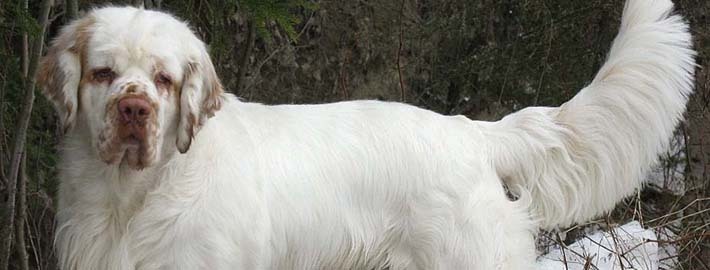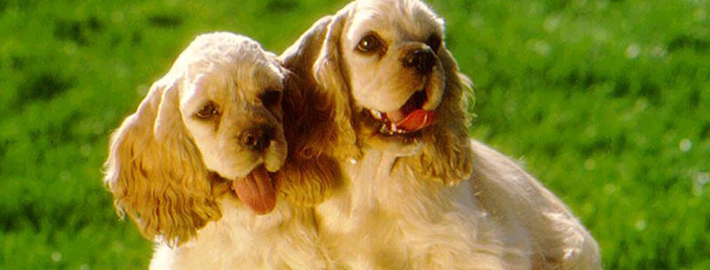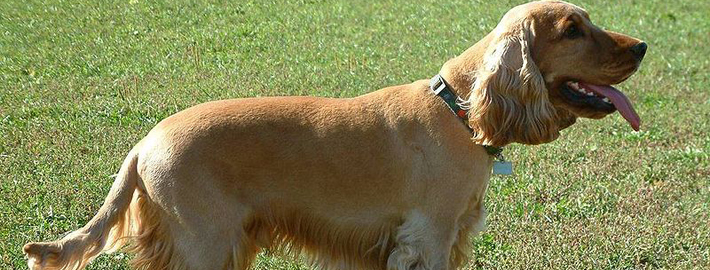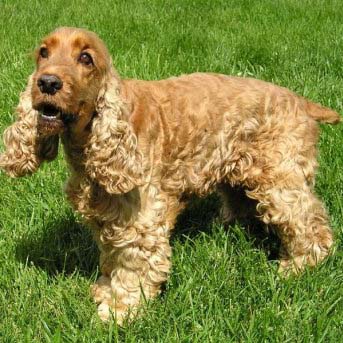What makes the Alpine Spaniel Unique?
The Alpine was a large breed of spaniel, described as reaching two feet at the withers and six feet from the nose to the tail. It had a closely set coat, curlier than that of the English Cocker Spaniel or the English Springer Spaniel. An intelligent breed, it was particularly adapted to the climate of the Swiss Alps.
Breed Groups
Page Contents
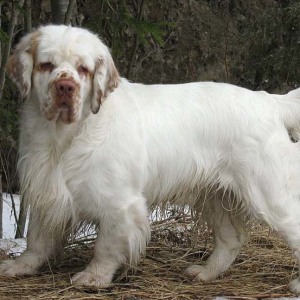
SnapShot
| Size: | Males – 37 to 39 cm (14 to 16 inches) Females – 34 to 37 cm (14 to 14 inches) |
| Weight: | Males – 7 to 14 kg (15 to 31 pounds) Females – 7 to 14 kg (15 to 31 pounds) |
| Origin: | United States of America |
| Life Span: | 12 -15 years |
| Colour: | Black & brindle, Wolf-Sable, Yellow, Red, Fawn, Brindle, White |
| Litter Size: | 4 to 8 puppies |
Is the Alpine Spaniel Right For You?
Well-behaved, companion alpine spaniels can truly be a a joy. But left untrained, your alpine spaniel can easily be trouble. Teaching your alpine spaniel the minimums—”Heel”, “Off”, “Sit”, “Stay”, “Come”, “Down”, and “Leave it”—bolsters the relationship both with the alpine spaniel as well as the relatives. If you own a puppy, begin teaching him or her the appropriate responses quickly! Use doggie snacks as recognition and incentive. Puppies should join obedience classes when they are sufficiently immunized. Contact the community humane society or SPCA for details about obedience classes. It is wise to keep your alpine spaniel on a leash in public, even as a puppy. Be positive your alpine spaniel will come to you when you say. A disobedient or aggressive alpine spaniel can’t play with kids.
In 5 Words
- Gentle
- Loving
- Playful
- Very intelligent
- Very determined
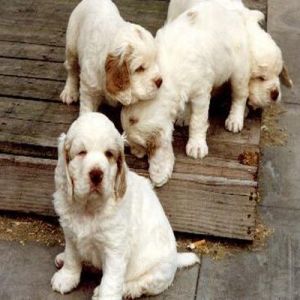
Characteristics
Learn About the Alpine Spaniel
Description
General Description
The Alpine was a large breed of spaniel, described as reaching two feet at the withers and six feet from the nose to the tail. It had a closely set coat, curlier than that of the English Cocker Spaniel or the English Springer Spaniel. An intelligent breed, it was particularly adapted to the climate of the Swiss Alps.
Old skulls in the collection of the Natural History Museum in Bern demonstrate a diversity in head shapes. The collection proves at least two distinct variations during the same time period. The larger skulls have a greater pronounced stop with a shorter muzzle while the smaller skulls show a great deal less stop whilst having longer muzzles.
Size
The Alpine was a large breed of spaniel, described as reaching two feet at the withers and six feet from the nose to the tail. It had a closely set coat, curlier than that of the English Cocker Spaniel or the English Springer Spaniel. An intelligent breed, it was particularly adapted to the climate of the Swiss Alps.
Coat
The Alpine Spaniel’s coat was much curlier than the English Cocker Spaniel. The natural History Museum in Bern has skulls of this species of dog. These dogs were often dispatched in pairs to search for lost travelers. They would lead the rescuers to the lost.
Short History of the Alpine Spaniel
Alpine spaniels were kept by the canons of the monasteries in the Alps in order to search for travelers during heavy snow storms, including the Great St. Bernard Hospice in the Great St Bernard Pass between Italy and Switzerland. The dogs would be dispatched in pairs to search for fallen travellers, and were trained so that upon finding them would return to the canons in order to lead rescuers back to the unfortunate individuals. The Alpine breed was also used as a watchdog to guard sheep and cattle of mountainous regions, including the Himalayas.
The Alpine Spaniel or Bernardine Dog is a breed almost peculiar to the Alps, and to the district between Switzerland and Savoy. The passes over these mountains are exceedingly dangerous from their steepness and narrowness. A precipice of many hundred feet is often found on one side, and perpendicular rocks on the other, while the path is glazed with frozen snow or ice. In many places the path is overhung with huge masses of frozen snow, which occasionally loosen and fall, when the dreadful storms peculiar to these regions suddenly come on, and form an insurmountable barrier, or sweep away or bury the unfortunate traveler.
Temperament
The Clumber is a typical spaniel in some ways, and then again, he’s not. He is gentle and loving and has a strong desire to please his family. He loves to be with people. On the other hand, the Clumber can also be an independent thinker. He is very intelligent. He’s very determined at times.
The Clumber has great dignity and can even seem aloof with people he doesn’t know which is quite unlike most spaniels. But once he knows you he will be your friend. These are loving, playful dogs and they are great with children. They make very good family pets. However, they have deep flew (lips) and they do drool a lot. Expect drool and slobber.
Caring for Your Alpine Spaniel
General Health
Your alpine spaniel should visit the vet for a thorough exam, immunizations and heartworm exam each and every year, and ASAP when she is injured or ill.
Hip dysplasia, back problems, retinal dysplasia, entropion (turned in eyelids) and ectropion (outward turned eyelids). Other health concerns include allergies, ear problems, epilepsy, hypothyroidism, and intervertebral disc disease.
Grooming & Bathing
The Clumber Spaniel’s Coat needs frequent brushing and bi-monthly trimming. Requires a good amount of walking to prevent them from becoming obese. Cleaning in between the toes is required, as mud and other outside matter can get stuck in between them. The Clumber Spaniel learns slower than some other breeds so patience and repetition is required. Leaving them alone is not a good idea, as they can become destructive when bored.
Exercise & Training
Alpine Spaniels need exercise in order to stay in shape, stimulate their minds, and remain in good health. Daily exercise also really helps alpine spaniels fight boredom, which has the potential to lead to difficult behavior. Exercise can quench many of your alpine spaniel’s desires to chew, dig, chase, retrieve and herd. Individual exercise needs depend on your alpine spaniel’s age and his or her level of health—but ten minutes in the backyard and a couple of walks down the street every day probably is not enough. If your alpine spaniel is a six to eighteen month adolescent, his requirements will probably be a little more.

